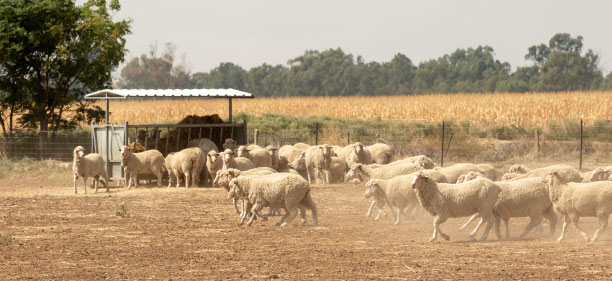
Livestock Overview
overview
Livestock

The estimated combined Output of NSW meat and livestock products was $6,733 million, up 4% year-on-year.
eCommerce mission to China
NSW DPI has developed and piloted a program combining intensive business workshops with a trade mission to China to provide an opportunity for NSW agribusinesses access to promote their products to the lucrative Chinese eCommerce market. Participation in the program provides the opportunity to develop and strengthen online marketing skills, gain a better understanding of China’s cross-border trade and critical government and commercial insights including marketing, logistics, culture and risk.
Media Release
The value of the livestock industries was estimated to have increased 4% year-on-year, driven partially by increased turn-off rates but also record prices for sheepmeat, goats and wool. Farmgate prices for livestock and livestock products rose 7% on average, driven solely by robust global export demand. The Output for livestock (meat) was $4,671 million, up 7% year-on-year, with beef cattle the main contributor by value. Livestock products Output (milk, eggs and wool) was $2,062 million, down 3% year-on-year, with the main contributor by value being wool.
Field conditions for extensive livestock industries in 2018-19 were generally unfavourable, with the sustained drought conditions further eroding available pasture and stock water reserves. Drought feeding resulted in an unprecedented rise in demand for hay and feed grains, and many producers struggled to source feed for their livestock. Cattle and sheep slaughter remained at historically high levels resulting in the continued reduction in the size of the breeding herd and potential pool of available finished stock.
Significant feed gaps followed the widespread failure of the 2019 autumn growing season which extended into the winter period. As the drought continued, increasing numbers of producers faced an extended period of hand-feeding. Many producers took advantage of the grazing or fodder opportunities provided by failed winter crops.
The seasonal conditions during winter 2018 were poor, with limited pasture availability and, despite the warmer-than-average temperatures, widespread soil moisture deficits prevented further pasture growth. Pasture conditions in the North Coast fared relatively better than other regions of NSW, but, despite some rainfalls in mid-autumn, these regions were also drying off.
Spring and summer highlighted the critical state of stock water supplies, with large parts of NSW having dam surface areas in the lowest 20% of capacity (relative to the highest level recorded since January 2000) (DPI, 2018). Critically low levels were identified in most LLS regions and despite some isolated thunderstorms in December, stock water reserves remained low across large parts of NSW, particularly in the most extensive areas of concern in the Western, North West and Central West. Extreme heat events over the summer also placed further pressure on stock water resources and demand.
Intensive livestock industries also faced very challenging operating conditions. High feed prices affected the cost of production across the sector and placed producer margins under pressure. The dry conditions had a detrimental effect on milk supply but poultry meat and egg supply remained relatively stable.
Livestock and livestock products estimated Output 2018-19
- Industry Output
- Year-on-year change

